High-Cycle Fatigue Behavior and Corresponding Microscale Deformation Mechanisms of Metastable Ti55511 Alloy with A Basket-Weave Microstructure
Abstract
1. Introduction
2. Materials and Methods
3. Results and Discussion
3.1. Microstructure of the Ti55511 Alloy
3.2. Tensile and HCF Properties of the Ti55511 Alloy
3.3. The Fracture Surface of the HCF Sample
3.4. The Deformation Mechanism of the HCF Sample
4. Conclusions
- The basket-weave structure of the Ti55511 alloy consisted of discontinuous GBα, αp lamellae, and a βtrans structure. The average width of the αp was 1.08 μm, and the length of the αs ranged from 200 to 700 nm.
- The Ti55511 sample in this work exhibited an average ultimate tensile strength of 1119 MPa, a yield strength of 1098 MPa, an elongation of 13.8%, and an ultimate strength of HCF of 738 MPa.
- The deformation mechanism of the Ti55511 during HCF was mainly determined by the dislocation slipping of the αp phase, i.e., dislocations slip within the αp phases. In addition, dislocation pile-up at the αp/βtrans interface induced stress concentration and microcrack initiation.
- The EBSD analyses indicated the prismatic <a> type slip system of the αp phase was preferentially activated during the HCF deformation process of the Ti55511 alloy, followed by the basal <a> and pyramid <a> systems, while the pyramid <a+c> slip was very difficult to activate.
Author Contributions
Funding
Institutional Review Board Statement
Informed Consent Statement
Data Availability Statement
Conflicts of Interest
References
- Wang, B.; Ding, X.; Mao, Y.; Liu, L.; Zhang, X. Nanoindentation and Microstructure in the Shear Band in a Near Beta Titanium Alloy Ti-5Al-5Mo-5V-1Cr-1Fe. Materials 2019, 12, 4065. [Google Scholar] [CrossRef] [PubMed]
- Boyer, R.R. Aerospace applications of beta titanium alloys. JOM 1994, 46, 20–23. [Google Scholar] [CrossRef]
- Singh, P.; Pungotra, H.; Kalsi, N.S. On the characteristics of titanium alloys for the aircraft applications. Mater. Today Proc. 2017, 4, 8971–8982. [Google Scholar] [CrossRef]
- Lütjering, G.; Williams, J.C. Titanium; Springer Science & Business Media: Berlin/Heidelberg, Germany, 2007. [Google Scholar]
- Lin, Y.; Pang, G.-D.; Jiang, Y.-Q.; Liu, X.-G.; Zhang, X.-Y.; Chen, C.; Zhou, K.-C. Hot compressive deformation behavior and microstructure evolution of a Ti-55511 alloy with basket-weave microstructures. Vacuum 2019, 169, 108878. [Google Scholar] [CrossRef]
- Shi, X.-H.; Zeng, W.-D.; Shi, C.-L.; Wang, H.-J.; Jia, Z.-Q. Study on the fatigue crack growth rates of Ti–5Al–5Mo–5V–1Cr-1Fe titanium alloy with basket-weave microstructure. Mater. Sci. Eng. A 2015, 621, 143–148. [Google Scholar] [CrossRef]
- Cotton, J.D.; Briggs, R.D.; Boyer, R.R.; Tamirisakandala, S.; Russo, P.; Shchetnikov, N.; Fanning, J.C. State of the art in beta titanium alloys for airframe applications. JOM 2015, 67, 1281–1303. [Google Scholar] [CrossRef]
- Shi, X.; Zeng, W.; Xue, S.; Jia, Z. The crack initiation behavior and the fatigue limit of Ti–5Al–5Mo–5V–1Cr–1Fe titanium alloy with basket-weave microstructure. J. Alloy. Compd. 2015, 631, 340–349. [Google Scholar] [CrossRef]
- Wu, G.; Shi, C.; Sha, W.; Sha, A.; Jiang, H. Microstructure and high cycle fatigue fracture surface of a Ti–5Al–5Mo–5V–1Cr–1Fe titanium alloy. Mater. Sci. Eng. A 2013, 575, 111–118. [Google Scholar] [CrossRef]
- Yingying, L.; Le, Z.; Xiaonan, S.; Xihao, X. Engineering. High Cycle Fatigue Properties and Fracture Behavior of Ti-5Al-5Mo-5V-1Cr-1Fe Titanium Alloy. Rare Met. Mater. Eng. 2018, 47, 3666–3671. [Google Scholar] [CrossRef]
- Huang, C.; Zhao, Y.; Xin, S.; Tan, C.; Zhou, W.; Li, Q.; Zeng, W. High cycle fatigue behavior of Ti–5Al–5Mo–5V–3Cr–1Zr titanium alloy with lamellar microstructure. Mater. Sci. Eng. A 2017, 682, 107–116. [Google Scholar] [CrossRef]
- Huang, C.; Zhao, Y.; Xin, S.; Zhou, W.; Li, Q.; Zeng, W.; Tan, C. High cycle fatigue behavior of Ti–5Al–5Mo–5V–3Cr–1Zr titanium alloy with bimodal microstructure. J. Alloy. Compd. 2017, 695, 1966–1975. [Google Scholar] [CrossRef]
- Campanelli, L.C.; da Silva, P.S.C.P.; Bolfarini, C. High cycle fatigue and fracture behavior of Ti-5Al-5Mo-5V-3Cr alloy with BASCA and double aging treatments. Mater. Sci. Eng. A 2016, 658, 203–209. [Google Scholar] [CrossRef]
- Peters, J.; Lütjering, G. Comparison of the fatigue and fracture of α+β and β titanium alloys. Metall. Mater. Trans. A 2001, 32, 2805–2818. [Google Scholar] [CrossRef]
- Pilchak, A.; Williams, R.; Williams, J.C. Crystallography of fatigue crack initiation and growth in fully lamellar Ti-6Al-4V. Metall. Mater. Trans. A 2010, 41, 106–124. [Google Scholar] [CrossRef]
- Benjamin, R.; Rao, M.N. Crack nucleation in β titanium alloys under high cycle fatigue conditions—A review. Proceedings of Journal of Physics Conference Series; IOP Publishing: Bristol, UK, 2017; p. 012048. [Google Scholar]
- Santhosh, R.; Geetha, M.; Saxena, V.; Rao, M.N. Effect of duplex aging on microstructure and mechanical behavior of beta titanium alloy Ti–15V–3Cr–3Al–3Sn under unidirectional and cyclic loading conditions. Int. J. Fatigue 2015, 73, 88–97. [Google Scholar] [CrossRef]
- Wanhill, R.; Barter, S. Fatigue of Beta Processed and Beta Heat-Treated Titanium Alloys; Springer Science & Business Media: Berlin/Heidelberg, Germany, 2011. [Google Scholar]
- Muiruri, A.; Maringa, M.; du Preez, W.J.C. Statistical Analysis of the Distribution of the Schmid Factor in As-Built and Annealed Parts Produced by Laser Powder Bed Fusion. Crystals 2022, 12, 743. [Google Scholar] [CrossRef]
- Jun, T.-S.; Sernicola, G.; Dunne, F.P.; Britton, T.B. Local deformation mechanisms of two-phase Ti alloy. Mater. Sci. Eng. A 2016, 649, 39–47. [Google Scholar] [CrossRef]
- Bridier, F.; Villechaise, P.; Mendez, J. Analysis of the different slip systems activated by tension in a α/β titanium alloy in relation with local crystallographic orientation. Acta. Mater. 2005, 53, 555–567. [Google Scholar] [CrossRef]
- Li, H. Analysis of the deformation behavior of the hexagonal close-packed alpha phase in titanium and titanium alloys. Ph.D. Thesis, Michigan State University, East Lansing, MI, USA, 2013. [Google Scholar]
- Hémery, S.; Villechaise, P. In situ EBSD investigation of deformation processes and strain partitioning in bi-modal Ti-6Al-4V using lattice rotations. Acta. Mater. 2019, 171, 261–274. [Google Scholar] [CrossRef]
- Jones, I.; Hutchinson, W. Stress-state dependence of slip in Titanium-6Al-4V and other HCP metals. Acta Metall. 1981, 29, 951–968. [Google Scholar] [CrossRef]
- Bridier, F.; Villechaise, P.; Mendez, J. Slip and fatigue crack formation processes in an α/β titanium alloy in relation to crystallographic texture on different scales. Acta. Mater. 2008, 56, 3951–3962. [Google Scholar] [CrossRef]
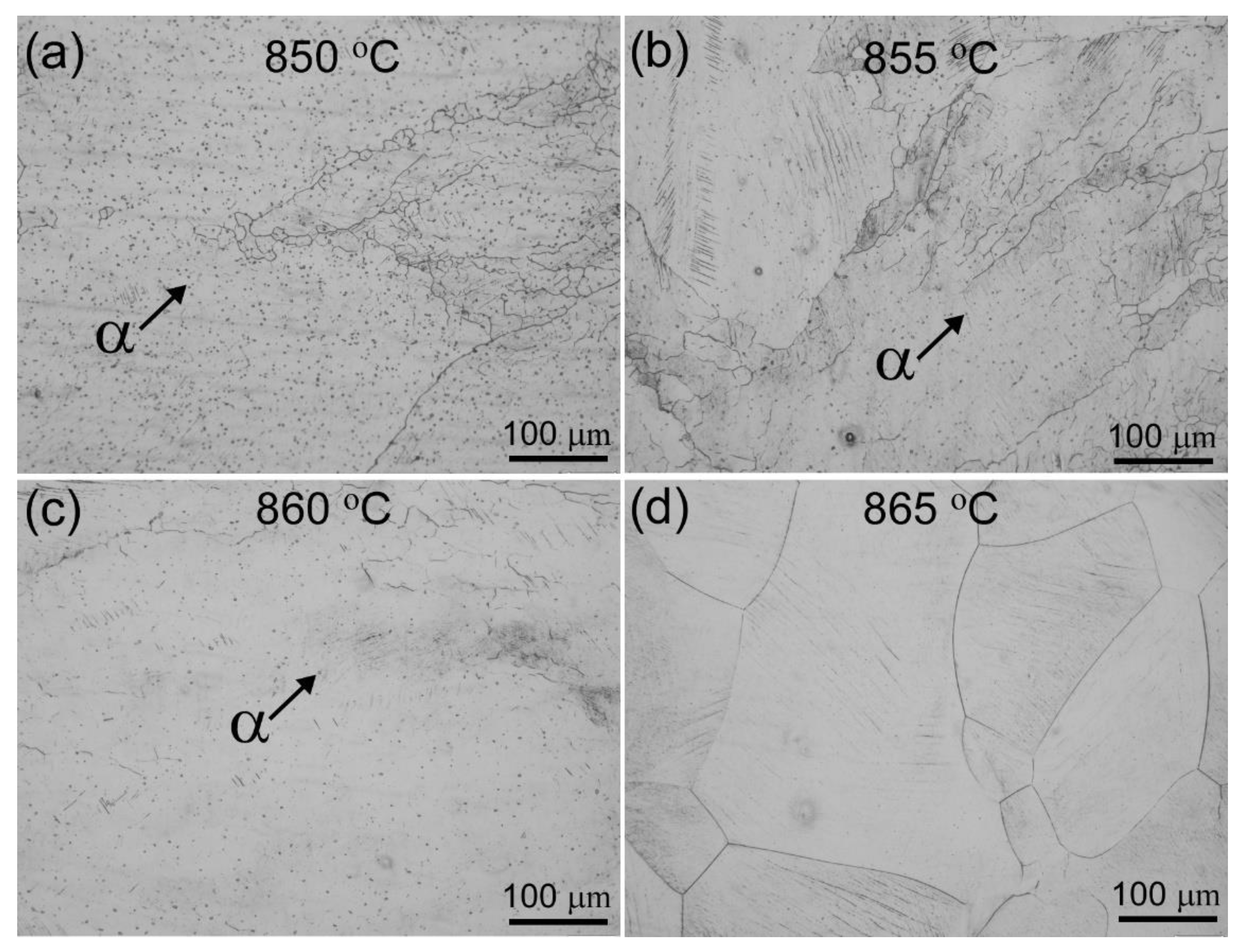
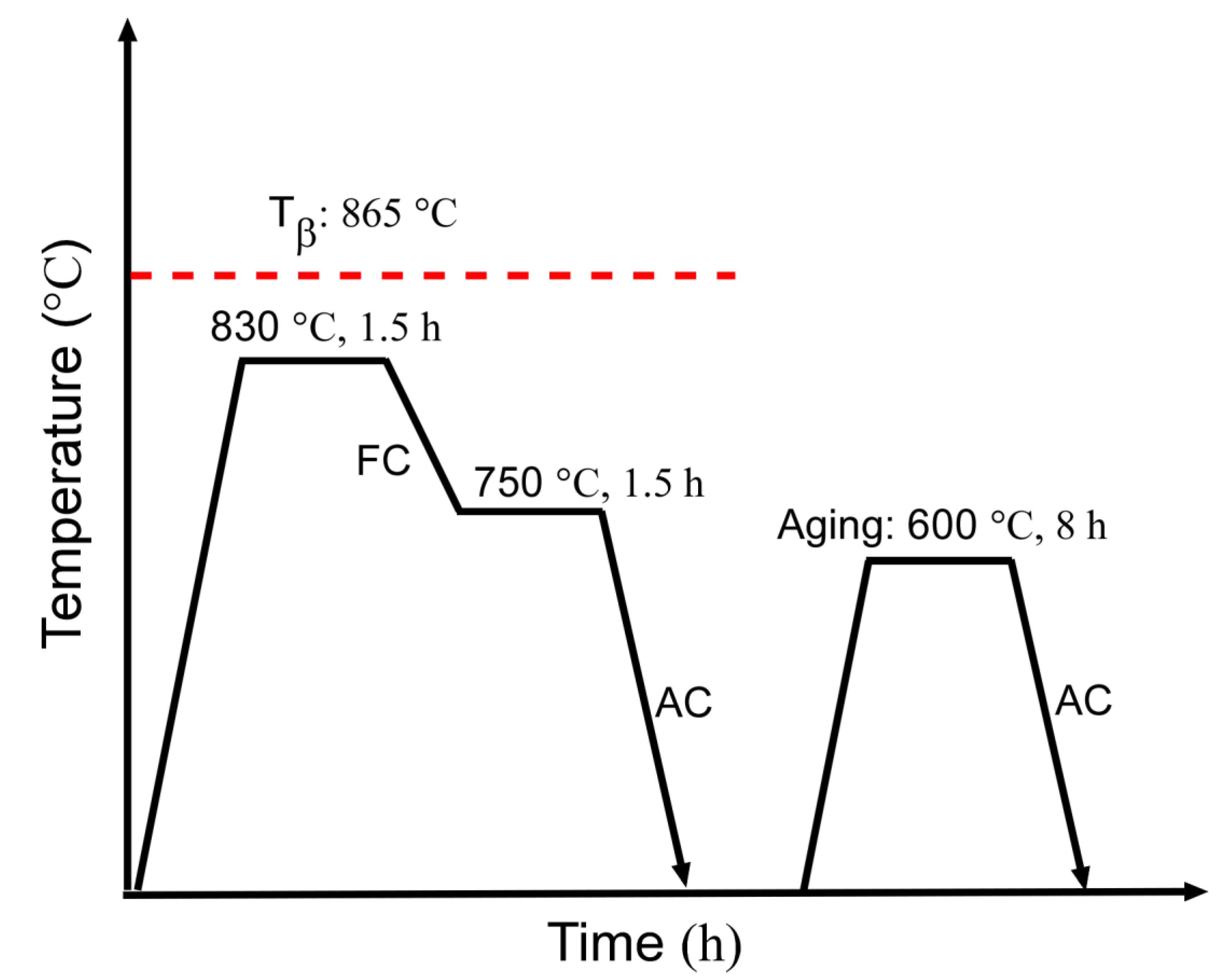
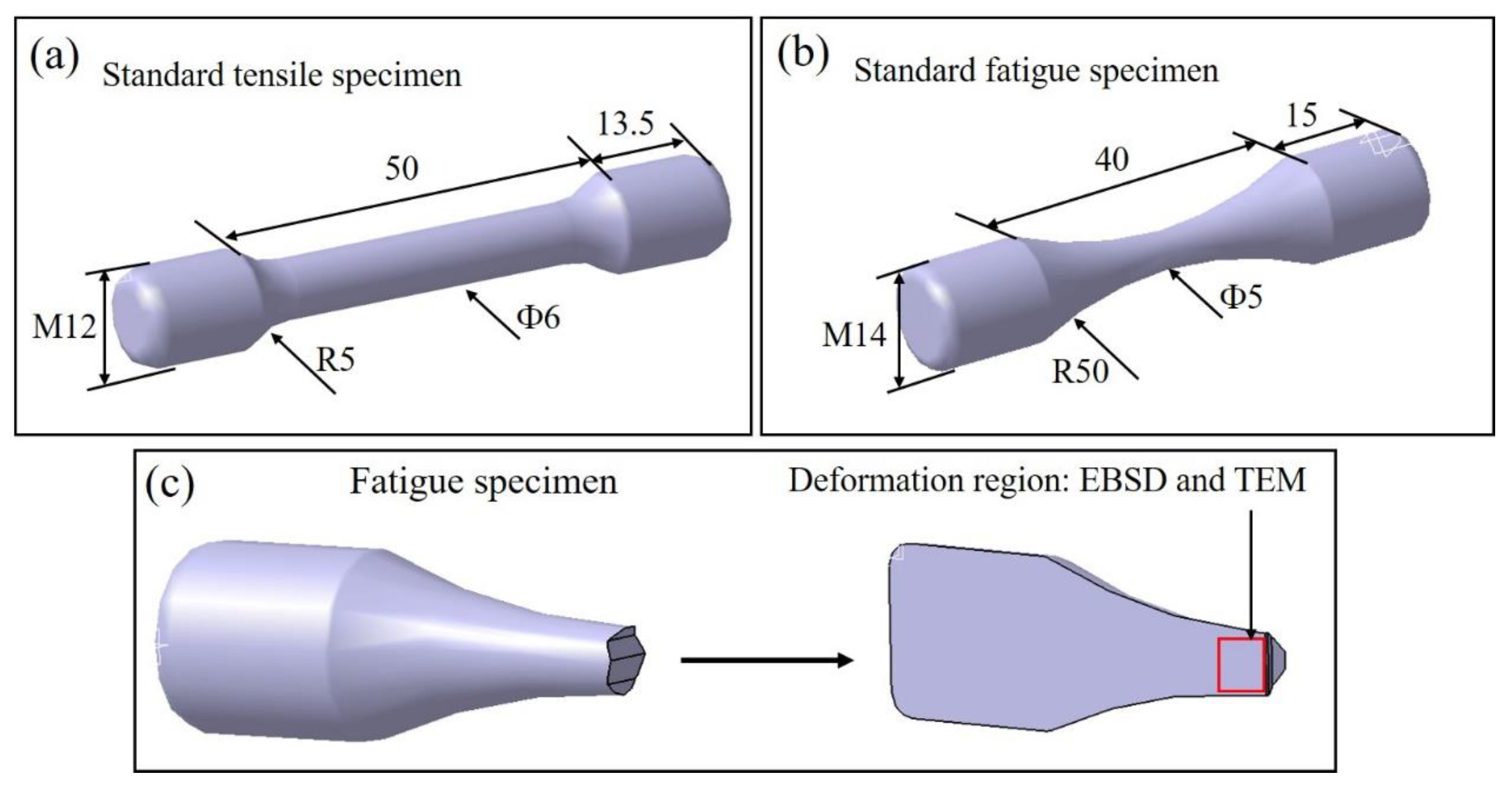
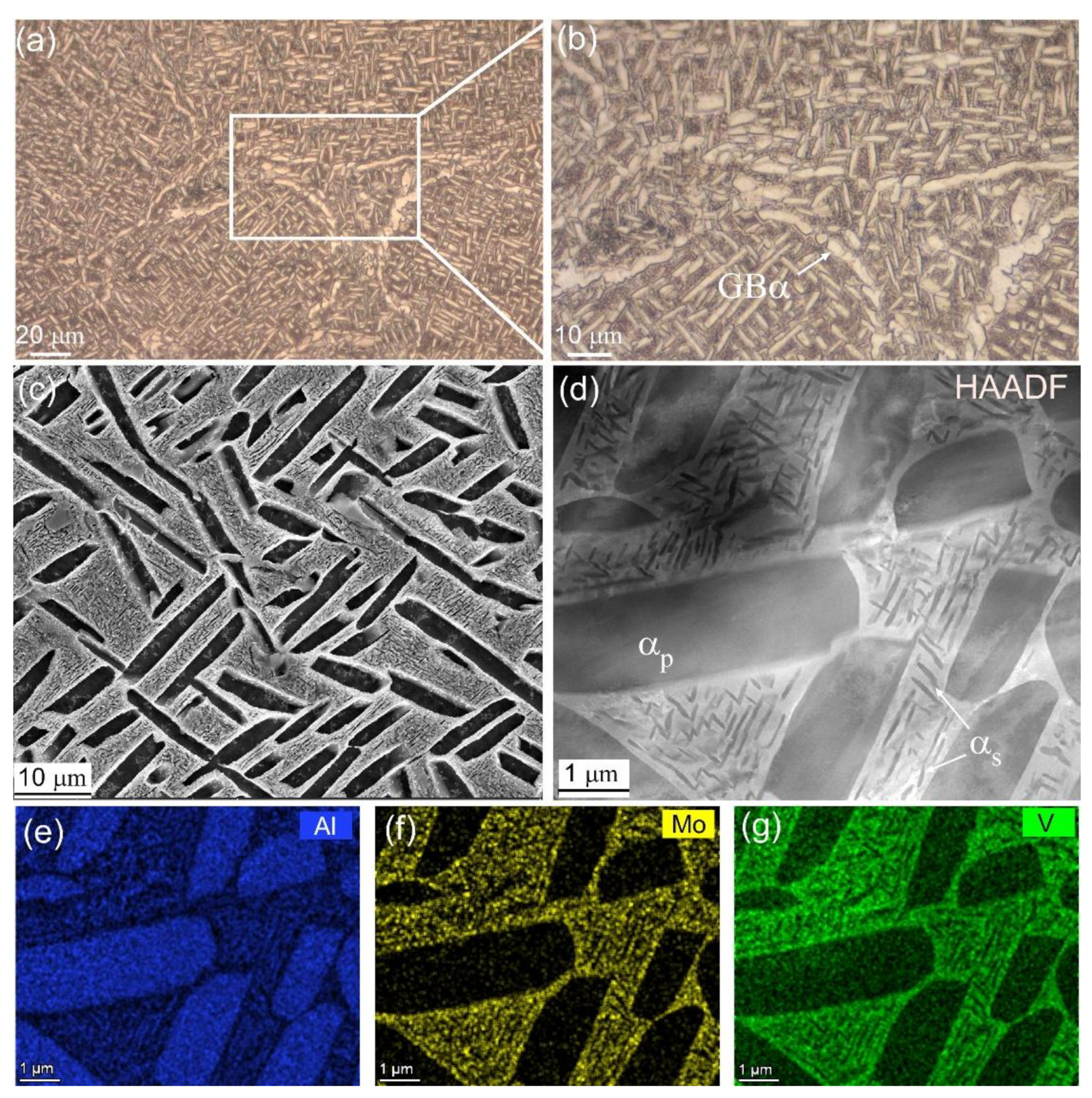
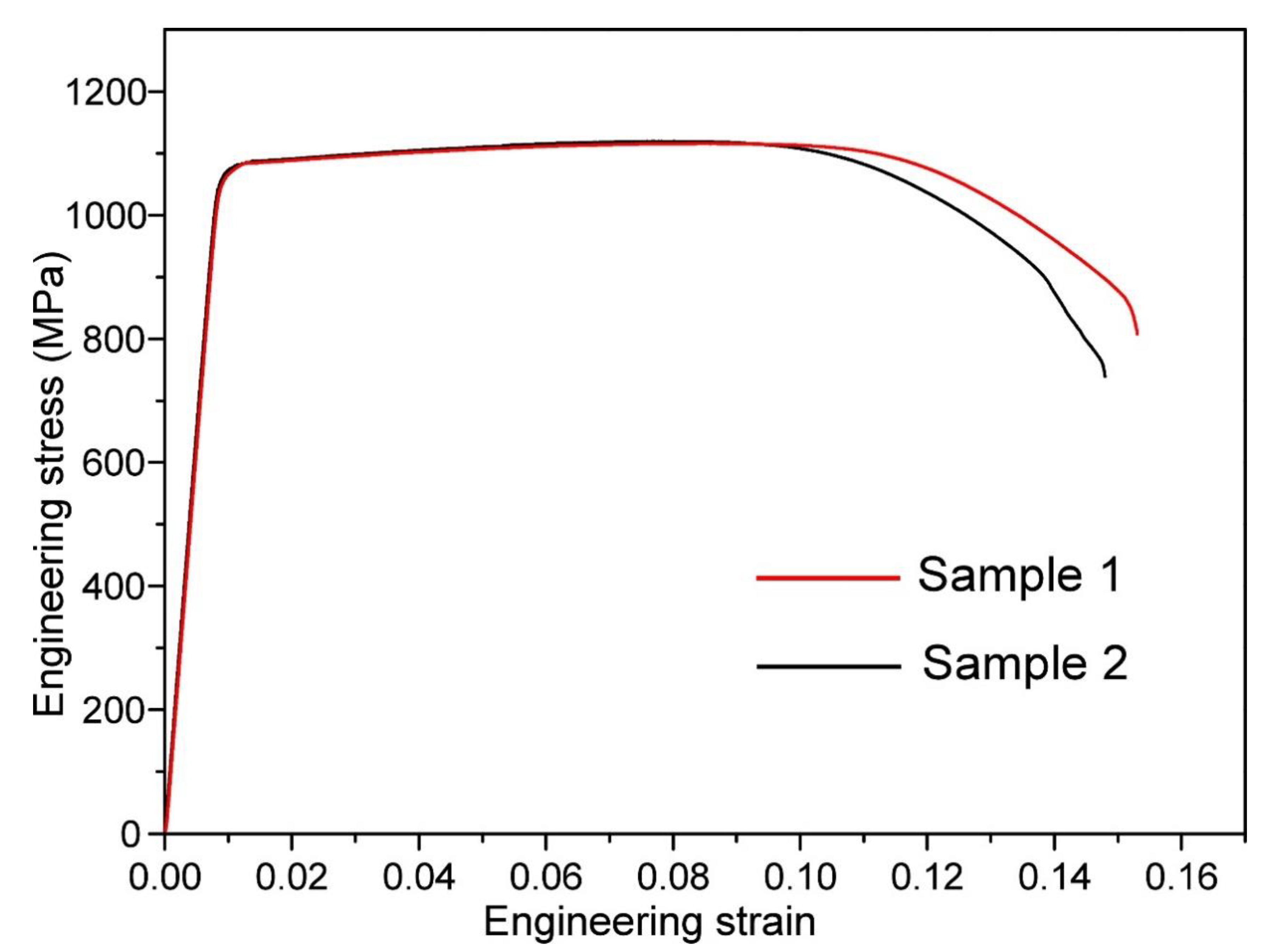
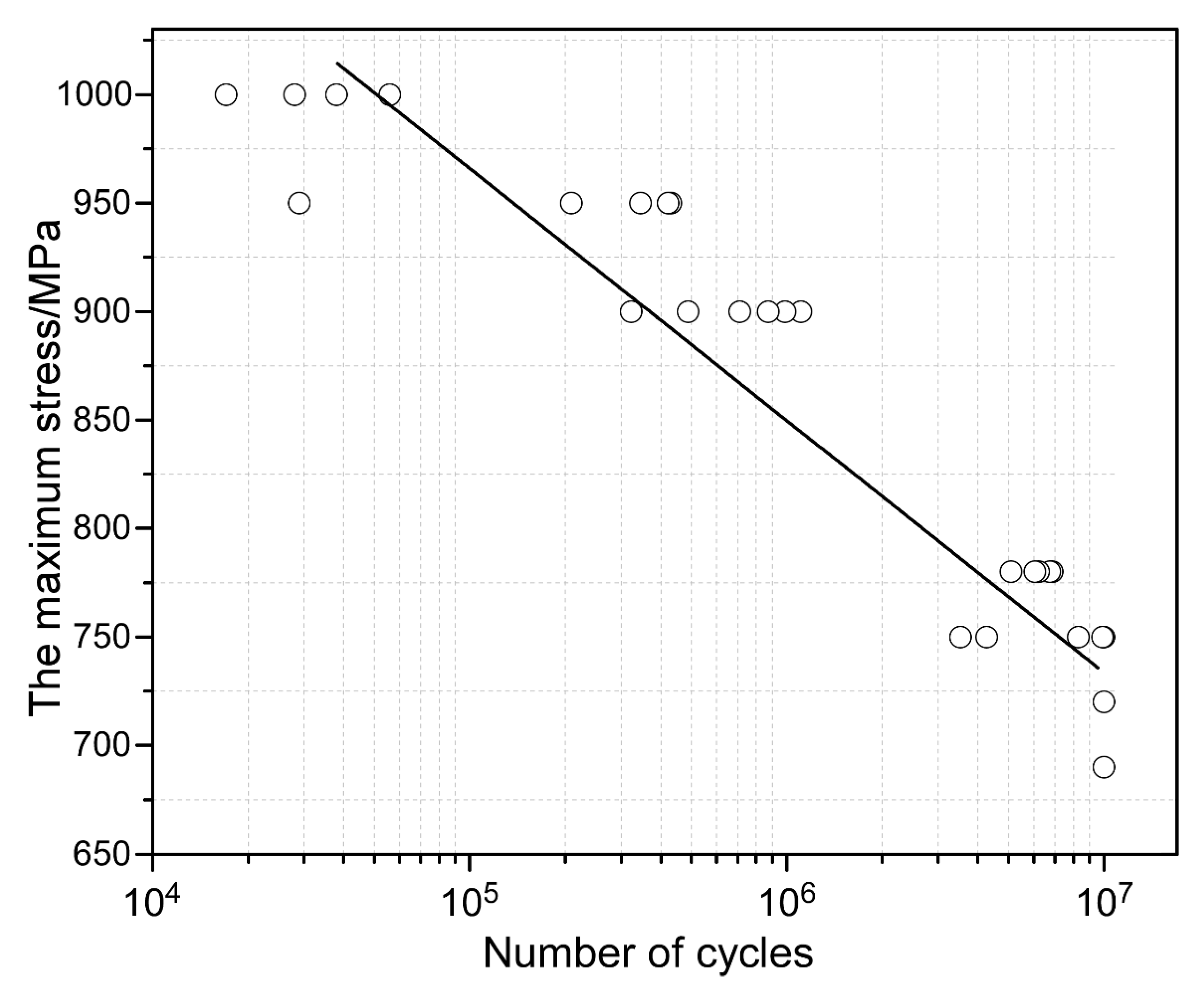
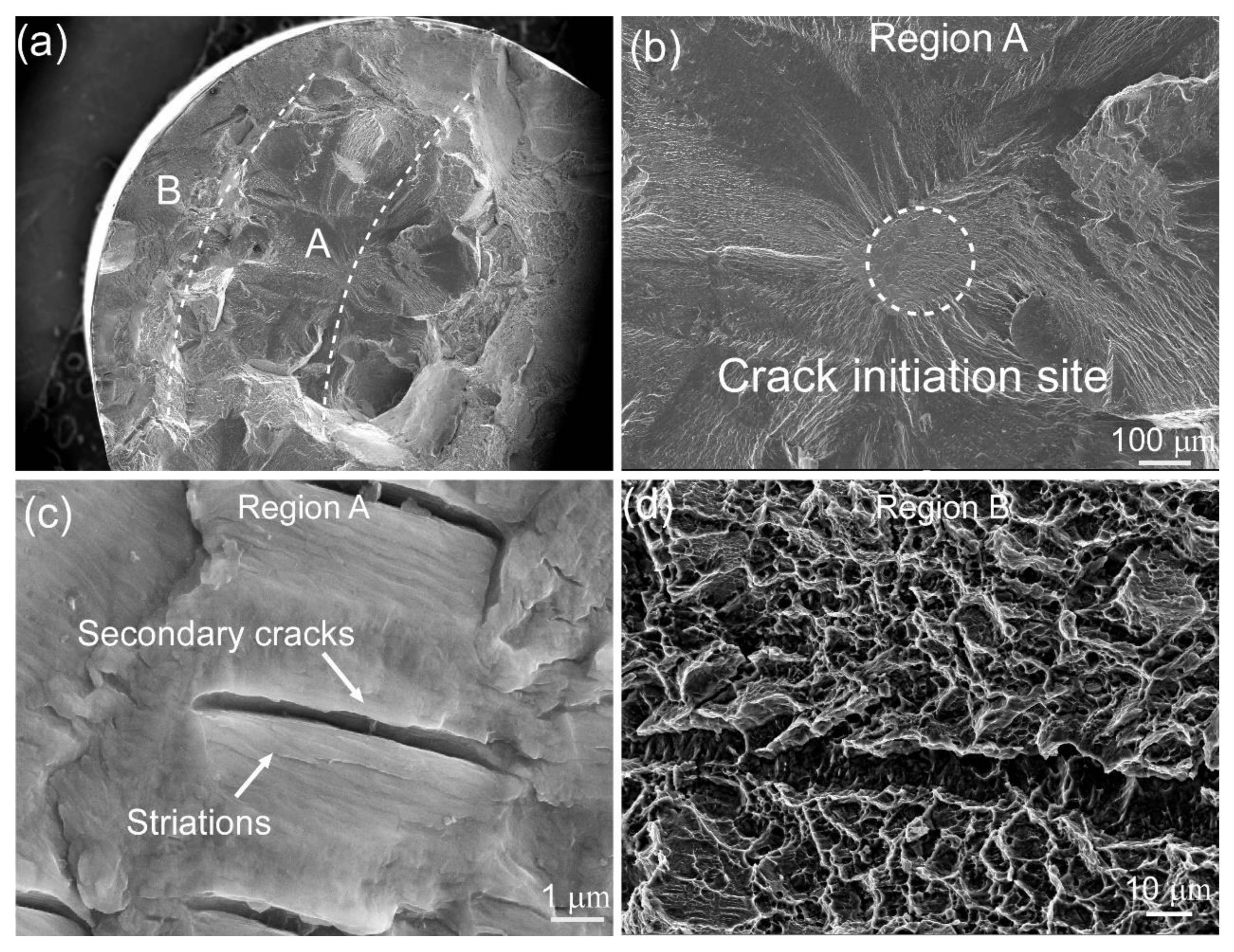
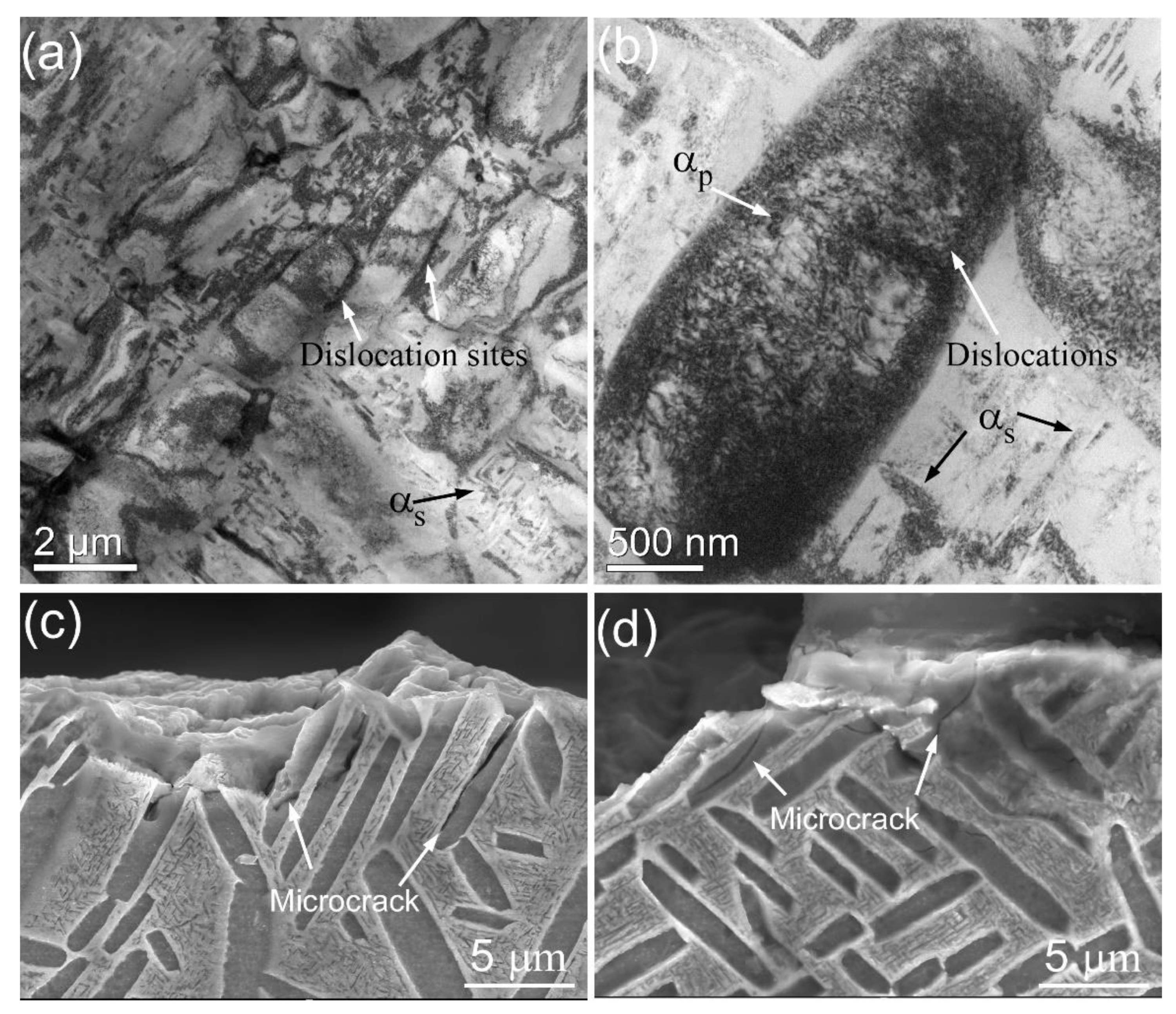
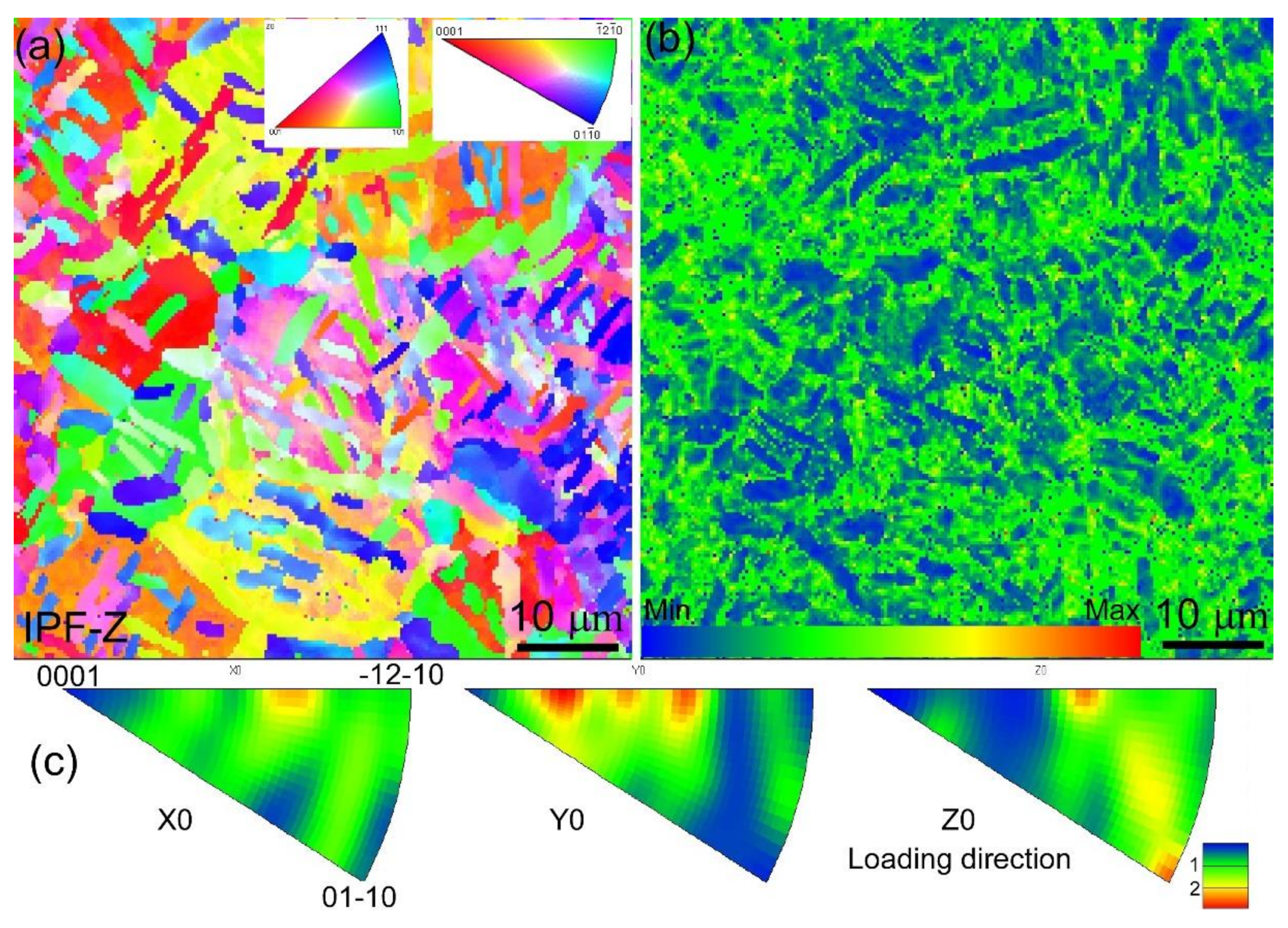
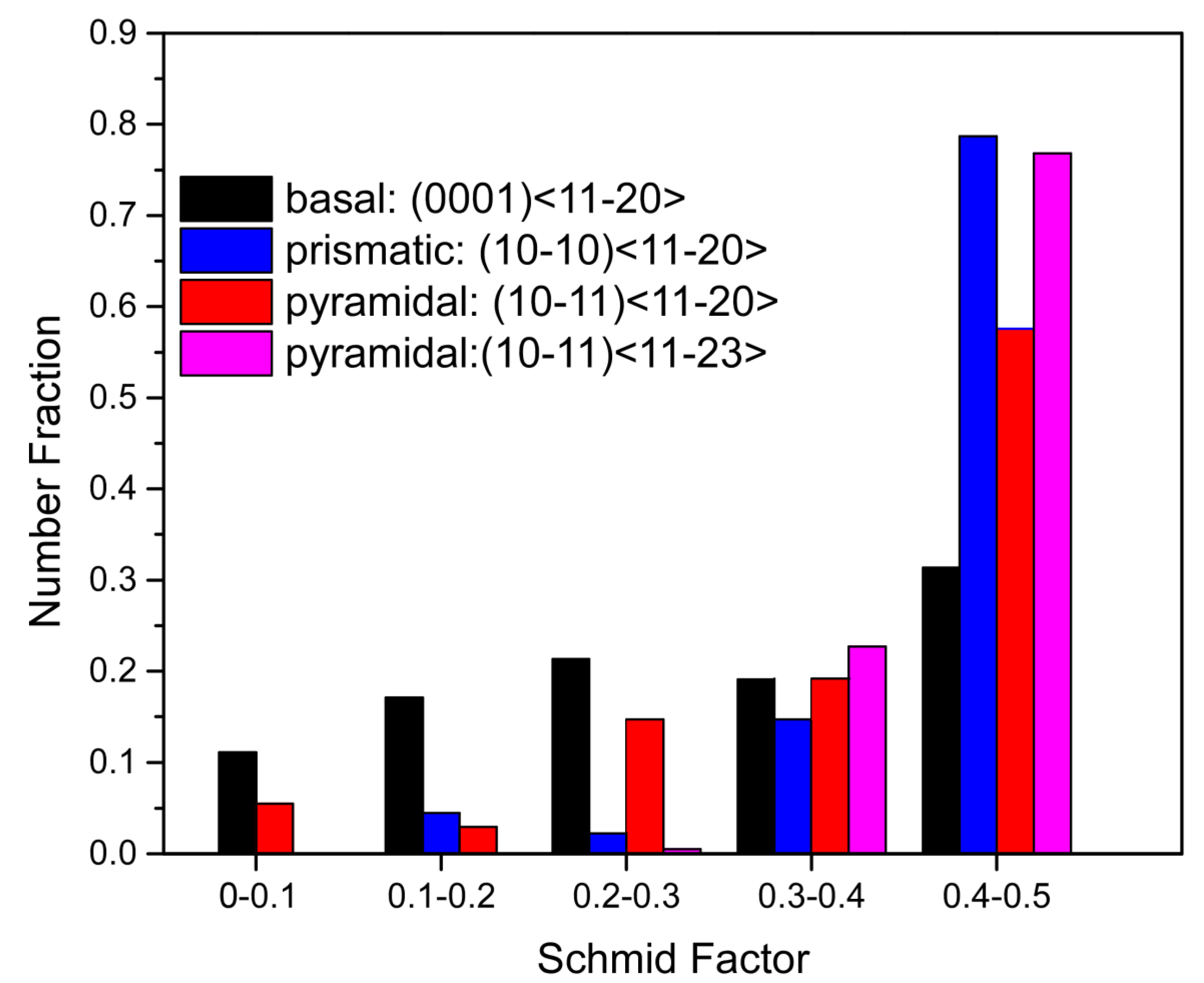
Publisher’s Note: MDPI stays neutral with regard to jurisdictional claims in published maps and institutional affiliations. |
© 2022 by the authors. Licensee MDPI, Basel, Switzerland. This article is an open access article distributed under the terms and conditions of the Creative Commons Attribution (CC BY) license (https://creativecommons.org/licenses/by/4.0/).
Share and Cite
Luo, H.; Yuan, W.; Xiang, W.; Deng, H.; Yin, H.; Chen, L.; Cao, S. High-Cycle Fatigue Behavior and Corresponding Microscale Deformation Mechanisms of Metastable Ti55511 Alloy with A Basket-Weave Microstructure. Materials 2022, 15, 7144. https://doi.org/10.3390/ma15207144
Luo H, Yuan W, Xiang W, Deng H, Yin H, Chen L, Cao S. High-Cycle Fatigue Behavior and Corresponding Microscale Deformation Mechanisms of Metastable Ti55511 Alloy with A Basket-Weave Microstructure. Materials. 2022; 15(20):7144. https://doi.org/10.3390/ma15207144
Chicago/Turabian StyleLuo, Hengjun, Wuhua Yuan, Wei Xiang, Hao Deng, Hui Yin, Longqing Chen, and Sheng Cao. 2022. "High-Cycle Fatigue Behavior and Corresponding Microscale Deformation Mechanisms of Metastable Ti55511 Alloy with A Basket-Weave Microstructure" Materials 15, no. 20: 7144. https://doi.org/10.3390/ma15207144
APA StyleLuo, H., Yuan, W., Xiang, W., Deng, H., Yin, H., Chen, L., & Cao, S. (2022). High-Cycle Fatigue Behavior and Corresponding Microscale Deformation Mechanisms of Metastable Ti55511 Alloy with A Basket-Weave Microstructure. Materials, 15(20), 7144. https://doi.org/10.3390/ma15207144








